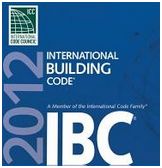See yesterday’s blog for Part I. To continue the discussion on Use and Occupancy:
Momentarily skipping a few chapters and going to Chapter 6 (because it would be too simple if the IBC was in order) the code book outlines different types of construction. Post frame buildings can fall under the following construction types:
The Type of Construction for post frame buildings is typically Type V.
602.5 Type V.
Type V construction is that type of construction in which the structural elements, exterior walls and interior walls are of any materials permitted by this code.
Table 601 gives TYPE V-B systems no fire rating (most typical for post frame construction). With a one-hour fire rating for the primary structural frame, bearing walls, as well as floor and roof construction and associated secondary members, post frame buildings could be classified as
TYPE V-A.
In some cases, a post frame building could also be Type III.
602.3 Type III.
Type III construction is that type of construction in which the exterior walls are of noncombustible materials and the interior building elements are of any material permitted by this code. Fire-retardant-treated wood framing complying with Section 2303.2 shall be permitted within exterior wall assemblies of a 2-hour rating or less.
Now head back to Chapter 5.
504.1 General.
The height, in feet, and the number of stories of a building shall be determined based on the type of construction, occupancy classification and whether there is an automatic sprinkler system installed throughout the building.
504.2 Mixed occupancy.
 In a building containing mixed occupancies in accordance with Section 508, no individual occupancy shall exceed the height and number of story limits specified in this section for the applicable occupancies.
In a building containing mixed occupancies in accordance with Section 508, no individual occupancy shall exceed the height and number of story limits specified in this section for the applicable occupancies.
504.3 Height in feet.
The maximum height, in feet, of a building shall not exceed the limits specified in Table 504.3.
In TABLE 504.3 we find the proposed building to be well under the wall height limitations for Type V-B buildings of 40’ without sprinklers or 60’ with.
504.4 Number of Stories.
The maximum number of stories of a building shall not exceed the limits specified in Table 504.4.
In TABLE 504.4 we find A-3 and U to be limited to one story without sprinklers, or two stories with sprinklers. Buildings with an R-3 category (residence) is three stories without or four stories with sprinklers.
Might the partial second floor be a mezzanine?
“505.2 Mezzanines.
A mezzanine or mezzanines in compliance with Section 505.2 shall be considered a portion of the story below. Such mezzanines shall not contribute to either the building area or number of stories as regulated by Section 503.1. The area of a mezzanine shall be included in determining the fire area. The clear height above and below the mezzanine floor construction shall not be less than seven feet.
505.2.1 Area limitation.
The aggregate area of a mezzanine or mezzanines within a room shall not be greater than one-third of the floor area of that room or space in which they are located. The enclosed portion of a room shall not be included in a determination of the floor area of the room in which the mezzanine is located. In determining the allowable mezzanine area, the area of the mezzanine shall not be included in the floor area of the room.”
If the second floor was 37 feet or less in length it might possibly become a mezzanine, which could alleviate some of the fire separation issues. This is provided the area below is not divided up into individual spaces.
However….
“505.2.3 Openness.
A mezzanine shall be open and unobstructed to the room in which such mezzanine is located except for walls not more than 42 inches in height, columns and posts.
Exceptions:
Mezzanines or portions thereof are not required to be open to the room in which the mezzanines are located, provided that the occupant load of the aggregate area of the enclosed space is not greater than 10.
2. A mezzanine having two or more exits or access to exits is not required to be open to the room in which the mezzanine is located.”
So, it does not appear the second floor will be able to be classified as being a mezzanine.
Come back tomorrow for Part III of a four part series.






